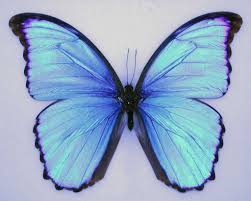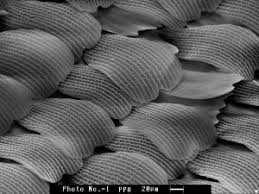Butterfly

Insects on land have to deal with water, particularly when it rains. After seeing how deadly the surface tension of water is to insects, with the pond skater and water boatman living almost entirely on flying insects that get stuck at the surface of the pond, it might seem surprising that any insects can survive in the rain. Many insects hide at the first sign of rain, but some of the larger insects do not. They can do this because they are large enough to stay flying if hit by a single raindrop. Usually their surfaces are superhydrophobic so they do not retain water and become heavy.

A recent study of butterflies shows that the scale structures (see the picture above) that create their colours also generate superhydrophobicity and directional shedding of water. Removing the scales, by damage or mutation, reduces the lifespan of the insects.
Publications
- Anisotropic hysteresis on ratcheted superhydrophobic surfaces H. Kusumaatmaja and J. M. Yeomans, Soft Matter 5 (2009) 2704-2707
- Directional adhesion of superhydrophobic butterfly wings, Y. Zheng, X, Gao and L. Jiang, Soft Matter 3 (2007), 178-182
